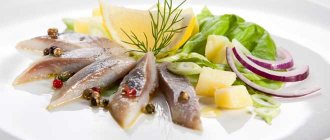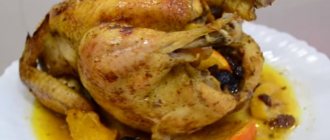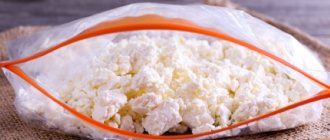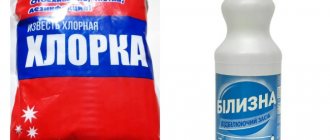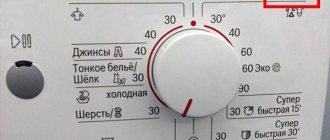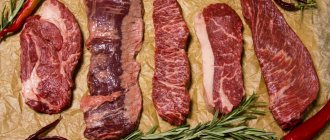How to properly defrost meat in the microwave: tips and tricks
One of the convenient and quick options for quickly defrosting meat products is the use of microwave ovens. These kitchen units, as a rule, have the specified function.
How to use this method correctly:
- remove a piece of meat from its packaging
- place it in a microwave-safe dish (glass or ceramic)
- cover with a lid
- place in the oven and set to “defrost”
- after 3 minutes, turn the product over
- microwave again on defrost mode for three minutes
- repeat similar manipulations until the meat is completely defrosted (about 3 - 4 similar cycles)
- After thawing, let the meat sit at room temperature for about half an hour
It should be noted that modern models themselves count down the thawing time and sound a beep when the meat needs to be turned over. And in some microwave ovens you need to enter the weight of the product into the program, set the desired mode, and the device itself will calculate the required time.
Defrosting in the microwave
It should be noted that this defrosting method, although quite fast, still has a number of significant disadvantages:
- The product is defrosting unevenly. This is especially true for large pieces or a whole poultry carcass, which has different meat thicknesses on different sides.
- food may have an unpleasant odor
- small pieces can simply be cooked
- the liquid from the product evaporates at an accelerated rate, and the dish ultimately turns out not so tasty and juicy
- You will need increased attention to the process in order to turn the piece over in time and not miss the right moment
- You should not resort to this method if the piece of meat is too large, as it will remain raw on the inside and dry out or baked on the outside.
As you can see, this thawing option is very controversial. Therefore, we advise you to use it only in an emergency.
Microwave cookware
Page 25
- Image
- Text
25
Dishes for
microwave oven
Never use metal utensils or utensils with metal trim in your microwave oven.
Microwaves cannot pass through metal. They will be reflected from any metal object placed in the oven and will cause the appearance of an electric arc, which is similar in origin to lightning. Most heat-resistant non-metallic cookware is microwave safe. However, some cookware may contain materials that make it unsuitable for use in a microwave oven. If you are unsure about the suitability of any particular cookware, there is an easy way to determine whether it is microwave safe. Place the item you are concerned about in the microwave next to a glass of water. Microwave on HIGH for 1 minute. If the water warms up and the utensil being tested remains cold to the touch, it is safe to use in the microwave. However, if the water temperature does not change and the dish becomes warm, it is absorbing microwaves and is not safe to use in a microwave oven. You probably already have a lot of utensils in your kitchen that can be used for microwave cooking. Just read the list below.
Table plates
Many types of dinnerware are microwave safe. If in doubt, consult the cookware manufacturer's documentation or carry out a microwave suitability test.
Glassware
Heat-resistant glassware is microwave safe. This also applies to all brands of tempered glass cookware. However, do not use fragile glassware such as glasses or wine glasses, as they may break when the food is heated.
Plastic containers for food storage
They can be used to quickly heat food. However, they should not be used for cooking for long periods of time, as hot food will eventually cause them to warp or melt.
Paper
Paper plates and containers are convenient and safe to use in the microwave, provided the cooking time is short and the food is low in fat and moisture. Paper towels are also very useful for wrapping food and baking pans used to cook fatty foods such as bacon. In general, try to avoid colored paper, as the dye may transfer to the food. Some recycled paper products may contain impurities that can cause arcing or fire.
Plastic bags for cooking
They are safe to use in the microwave provided they are specifically designed for cooking. However, be sure to cut a slit in the bag to allow steam to escape from the bag. Never use regular plastic bags for cooking food in your microwave oven as they will melt and tear.
Plastic kitchen utensils for microwave oven
Microwave cookware is available in a variety of shapes and sizes. For the most part, you can probably use utensils you already have in your kitchen rather than buying new ones.
Faience, pottery and ceramics
Vessels made from these materials are usually perfectly suitable for use in a microwave oven, but to be completely sure they must be tested in the above manner.
WARNING
Some cookware containing high lead or iron content is not suitable for use in a microwave oven. To be sure that your cookware can be used in a microwave oven, you must test it.
How to properly defrost meat in a slow cooker: tips and tricks
Increasingly, a useful and convenient device – a multicooker – takes its place of honor in the modern kitchen. Many housewives appreciated its capabilities. This household appliance also does an excellent job of defrosting meat.
How the process is carried out:
- place the meat, after removing its packaging, into the basket that is included in the package
- pour water into the bowl of the device
- set the device to “Steam cooking” mode
- do not cover with a lid
- after 8-20 minutes. (based on weight) the product will be defrosted
It is believed that this method allows the meat to preserve all its taste properties.
How to defrost meat in the oven?
Defrosting meat products in the oven has a number of advantages over other methods:
- defrosting occurs more evenly
- the process is significantly accelerated
- the meat inside the chamber does not become chapped or dry out
- the fibers retain their structure and meat juice does not leak out
Many modern models of ovens even have a defrosting function, which greatly facilitates the housewife’s work. In the event that your household appliances do not have such characteristics, meat can be defrosted in two ways.
Thaw meat in the oven
With temperature (accelerated method):
- Set the cabinet temperature to 30 degrees
- remove the packaging from the meat
- place in the oven for 8-10 minutes
- Check the defrost level periodically
Be careful not to overdo it with the temperature, otherwise your product will not thaw, but will bake: the inside will remain raw, and a crust will form on top.
Using convection (longer process):
- turn on the convection mode, if present on your device
- do not use the heating option
- place the product in the center of the rack
The fan creates air movement, which allows for more even defrosting.
The product ultimately retains its beneficial qualities and is practically no different from fresh analogues.
Basic recommendations for thawing food in the oven:
- place the plate with meat on the grill
- It is better to use ceramic dishes
- you can cover the piece with some kind of bowl or plate - this will slow down the process a little, but the meat will turn out more tender and will not dry out
- Turn the product periodically for more even thawing.
Vegetables and fruits
Defrosting vegetables and fruits in the microwave preserves their flavor and color. Place supplies on a plate. Pour some water into it. Cover the top of the dish with a special lid or foil designed for the microwave. Turn food over periodically, especially when the ice crust comes off.
To quickly defrost berries, use small bags. Before putting them in the microwave, soak them in cold water for a few minutes so that the frozen fruits separate from each other. Then cut the bag diagonally and place the cut side down so that the released juice can flow freely into the bowl.
How to defrost meat in water?
Using water to defrost large pieces of meat or small semi-finished products is a common option for many housewives.
In this case, you can use different water.
Hot:
- place the meat in a sealable bag
- heat the water to about 60 degrees
- put the bag in a pot of water
- after 5-10 minutes, remove and place in a bowl of water at room temperature
- keep it like this for 20-25 minutes
In this way, a piece of pork weighing about a kilogram is defrosted within 30 - 40 minutes.
It is possible that if the piece is large enough, the meat will not defrost completely and will not be suitable for cooking steaks or chops. However, for stewing, baking, etc., this method is quite acceptable.
Cold:
- place the wrapped meat in a deep container
- fill with ice water
- Additionally, you can add crushed ice to the bowl
- Change the water periodically to keep it cold or add new ice.
Defrosting meat in water
Salty:
- meat must be removed from packaging
- make a concentrated solution of water and salt
- send a piece there
- wait 15-20 minutes
- When preparing the dish, keep in mind that the meat has already been salted
This method is accelerated due to the fact that salt activates heat exchange, and the product defrosts faster and more evenly.
Flow-through:
- place the meat product in a bowl
- place in the sink under the tap
- open the tap so that water (cold or warm) flows in a thin stream onto the meat
When using the methods listed above, keep in mind the general rules:
- defrost the meat in a bag so that the water does not affect the structure of the fibers
- in the case when products are defrosted without packaging, the water must be changed quite often (every 20 minutes), since microorganisms multiply quickly in it
- When defrosting the liver, add milk to the water - this will make it more tender.
Processing of meat and meat products
Category: Meat and meat products
Meat is defrosted (thawed) in two ways. Slow defrosting is carried out in a defroster at a temperature from 0 to + 6 ° C, in the absence of a defroster - in the meat shop on production tables. Meat is not defrosted in water or near the stove. Re-freezing defrosted meat is not allowed. It is allowed to defrost meat in microwave ovens (installations) according to the modes specified in their passports. Before deboning, meat in carcasses, halves and quarters is thoroughly cleaned, brands are cut off, blood clots are removed, then washed with running water using a brush. At the end of the work, the brushes are cleaned, washed with hot solutions of detergents at a temperature of 45-50°C, rinsed, soaked in a disinfectant solution for 10-15 minutes, rinsed with running water and dried. Minced meat is stored for no more than 6 hours at a temperature of + 2 to + 4 ° C. In the absence of refrigeration, storing minced meat is prohibited. By-products (brains, kidneys, scars) are defrosted in air or water. Before heat treatment, brains, udders, kidneys, and scars are soaked in cold water. Poultry carcasses are defrosted in air, then washed with running water and laid cut side down to drain the water. For processing raw poultry, separate tables, cutting and production equipment are allocated. When preparing jelly, boiled meat products and other components are poured with strained broth and subjected to repeated boiling. Hot jelly is poured into pre-scalded molds (baking trays) and left to cool to a temperature of 25°C on production tables. Subsequent cooling and storage at a temperature of 4±2°C is carried out in a refrigerator in a cold workshop. Selling jelly without refrigeration equipment is not allowed. The readiness of meat and poultry products is determined by the release of colorless juice at the puncture site and the gray color on the cut of the product, as well as the temperature in the thickness of the product. For natural chopped products - not lower than 85°C, for products made from cutlet mass - not lower than 90°C. The specified temperature is maintained for 5 minutes. Boiled meat, poultry and offal for the first and second courses are cut into portions, poured with broth, boiled for 5-7 minutes and stored in the same broth at a temperature of +75°C until leaving for no more than 1 hour. When preparing the filling for pies and minced pancakes from pre-boiled meat or liver are fried on a baking sheet for at least 5-7 minutes, stirring occasionally. The finished filling should be used within 2 hours after frying. The preparation and sale of jellies and pates, aspics from meat, poultry, fish, pancakes and pies with minced meat and liver and other products of increased epidemic risk are allowed if there is a sanitary and epidemiological conclusion from the Rospotrebnadzor authorities.
Which water is better to defrost meat: hot or cold?
To answer the question of what temperature water is best to defrost poultry or meat, you need to understand what is more important to you at the moment - the speed of thawing or the preservation of the beneficial properties of the product.
If you need to defrost meat as quickly as possible, then use warm water. Please note - not hot. Because high temperatures negatively affect the quality of meat and contribute to:
- protein breakdown
- active formation of harmful microorganisms and bacteria
- decreased taste of food
According to chefs, it is correct to defrost meat in very cold, even ice-cold water. This method is considered more useful and safer for the following reasons:
- the products remain fresh and practically do not lose their quality
- thawing occurs evenly to the very middle of the piece
- the product retains its juiciness
How to defrost meat in the refrigerator?
The most correct and useful method of defrosting any food, including meat, is to place it in the refrigerator. This preserves the nutritional value of all semi-finished products.
How to do it right:
- Without removing the packaging from the meat product, place it in a bowl so that moisture can drain there
- place in the refrigerator for a day on the shelf where the lowest temperature is maintained
- When the piece is almost defrosted, take it out and keep it at room temperature (this
- need to be done about a couple of hours before cooking)
- if you don’t have that much time, put the meat in water for 15 minutes
You can check how much liquid has collected in the plate after defrosting. The quality of the meat product is determined by its quantity - the less water, the faster and more correctly it was frozen.
Defrosting in the refrigerator
Remember that the meat must be thawed to room temperature before cooking. It is thanks to this:
- it will cook evenly
- the taste of the finished dish will be more tender and rich
- loss of vitamins will be reduced to a minimum
In cases where you have enough time, defrost the meat in the refrigerator. This is the most useful and safest method. In addition, as a bonus, you will save a little on electricity: the cold emanating from the ice product helps reduce the frequency of the compressor turning on.
Proper defrosting of minced meat
In most cases, people make large purchases once every one to two weeks, and store purchased products in refrigerators and freezers.
There are two ways to defrost food:
- Slow - more useful, allowing you to preserve its nutritional value in food. The slower a piece of meat thaws, the tastier and juicier it will be when cooked. However, some experts believe that too long a process of thawing poultry or meat contributes to the rapid proliferation of bacteria on their surface and the destruction of a large number of useful components. And by the time the middle of the piece has completely thawed, its outer part will have already lost its nutritional value.
- Accelerated - significantly reducing the process time, but at the same time promoting the activation of product enzymes, which worsens its quality. In addition, defrosting too quickly contributes to accelerated loss of moisture, and as a result, the taste characteristics of food. Ice crystals inside frozen meat during active thawing tear its fibers, causing excessive loss of fluid.
It often happens that a frozen semi-finished meat product was not removed from the freezer on time, and you need to prepare a dish from it as soon as possible. There are several ways to quickly defrost meat and poultry:
- in the air (at room temperature or near a radiator)
- in water (cold or hot)
- using kitchen appliances (oven, microwave, multicooker, steamer)
- in a water bath - the product is placed in a small saucepan (preferably a ceramic one) and sent to a large container with boiling water
Defrosting meat
Which of these methods to use is up to you. But, according to experienced cooks, one of the best accelerated ways to thaw meat is to immerse it in water. Advantages of this method:
- Heat transfer in water occurs much faster than in air
- the possibility of penetration of pathogenic microorganisms into the product is reduced
- the meat remains juicy and soft
We suggest you read: How to get rid of mold on boards and what to do with sexual fungus?
Defrosting meat products
Let's list some tricks and subtleties of defrosting meat products:
- The main requirement for obtaining a tasty dish: freezing should occur as quickly as possible, and defrosting as slowly as possible.
- Meat that you will bake or boil as a whole piece can be cooked immediately, without defrosting.
- Do not refreeze meat, this will ruin its taste and kill all its nutritional properties. If you couldn’t cook it within 24 hours, it’s better to marinate and cook later.
- Before cooking, rinse the defrosted piece with water and dry with a paper towel.
- Poultry meat is much more tender than beef and pork. And the freezing/thawing process has a more detrimental effect on the fibers. Therefore, it is better to thaw the bird in the refrigerator.
- Remove the liquid that is released from the meat during thawing, as pathogenic microorganisms actively multiply in it.
- Store defrosted meat products for no more than 8 hours.
Despite the arguments of experts about the benefits of slowly thawing food, sometimes situations arise when we need to defrost ice-cold meat as quickly as possible. To speed up the thawing process, use the advice of experienced chefs:
- If the piece is wrapped in thick plastic, remove it. It is better to wrap the product in thin cling film or a bag, first releasing the air from there
- When the meat has thawed a little, cut it into smaller pieces - they will defrost much faster
- It is quite acceptable to defrost chopped meat or minced meat in a microwave or oven, since juiciness is not expected from it in the finished dish. And semi-finished products in the form of cutlets or meatballs don’t need to be thawed at all, but you can start cooking right away (start by frying until crusty, and then finish cooking in the oven)
Many Internet users speak positively about the emergency method of defrosting meat, the essence of which is as follows:
- heat the water to 52 degrees
- put a piece of meat there wrapped in thin plastic
- stir the water - this is a very important condition, since the meat thaws precisely thanks to the circulation of the liquid
Unfortunately, this method cannot be called very convenient, since it is difficult to heat the water exactly to 52 degrees. In addition, the need to constantly stir the water deprives a person of the opportunity to do other things.
Defrost meat quickly
A more reliable method seems to be proper freezing of products, which will subsequently speed up the thawing process:
- Before storing in the freezer, cut pieces of meat into small portions
- For convenience, sign all food packages
- Fresh minced meat is stored for no more than a day, since the process of reproduction of microorganisms in minced meat occurs at an accelerated pace. You need to freeze it in small portions, putting it in a bag and rolling it out (this way you can compactly mark it out in the freezer, and then thaw it faster)
- Wash large pieces of meat first in water, then dry and only then pack in plastic
- freeze food at maximum power (many modern units have a “super freeze” option)
Of course, cooked fresh meat has excellent taste and greater juiciness. However, in most cases, when tasting a dish, a person has no idea that the product was previously frozen if all thawing rules are followed.
When properly defrosting minced meat, it is important to remember that this is not a quick process. The temperature should be higher than in the freezer, but lower than room temperature, optimally 2–4 degrees.
Defrosting minced meat correctly is not a quick task
First of all, of course, it depends on the type of meat. Chicken, fish, turkey, game, beef, lamb or pork - each type of meat requires its own time to defrost. Beef takes the longest to defrost - this meat is the most fibrous and quite tough. Faster - chicken or fish. It is important to remember that you should not cook chicken, beef or pork that is not completely defrosted - this can lead to food poisoning.
Minced chicken defrosts just as quickly as fish
The size and shape of the piece determine the duration of defrosting. It is logical to assume that the larger the piece, the longer it will take to thaw. Pieces of minced meat weighing 1.5–2 kg can take up to 48 hours to defrost. A large piece weighing 1 kg takes a whole day to thaw - 24 hours. You can easily see a pattern in this - for every kg of frozen product we add another day.
The size of the product affects the duration of the process: the smaller the piece, the faster it will defrost
Some creative housewives suggest defrosting minced meat with a hairdryer. You should not do this - the meat will turn out dry and tasteless.
There is no need to defrost the minced meat in hot or warm water - the protein coagulates in it, and after cooking the meat turns out to be unpleasantly tough.
It is also better not to defrost twice-frozen, dry or long-stored minced meat. Of course, you shouldn’t refreeze it either, but if such a need arises, do not defrost the semi-finished product, but cook from it right away - you can stew, boil or fry without thawing.
There are several ways to defrost minced meat. Let's look at the most popular ones.
In the microwave
- The fastest existing express method for defrosting minced meat is to heat it in the microwave. We place the product in a special microwave-safe container, after first removing it from the packaging or plastic bag. If this is difficult to do because the packaging is frozen to the minced meat, you need to soften it under running cold water.
- Turn on the “Defrost” mode. The time to defrost minced meat in the microwave depends on the weight of the piece and the type of product. For example, a semi-finished pork or beef product weighing 500 g needs to be heated for about 14 minutes. The same piece of minced poultry will defrost in 12 minutes, but for fish, 10 minutes will be enough.
- We take the product out of the microwave oven and use it for its intended purpose.
It is important not to overcook the minced meat in the microwave, otherwise it will acquire an unpleasant odor and lose all its juiciness and become dry. In addition, the semi-finished product may defrost unevenly, or remain completely frozen inside, but scald at the edges. To avoid this, you need to turn the minced meat and divide it into smaller pieces as it thaws.
A microwave will help you defrost minced meat quickly.
Almost every microwave oven has a rotating rack to ensure even heating of food. If your device does not have it, you will need to turn the minced meat, stopping the microwave every 2 minutes (sometimes it stops itself), in this case the product will not be scalded on top, and the bottom will not remain undefrosted.
In a water bath
You can defrost minced meat quickly using a water bath.
- Pour water into a large saucepan - a little less than half.
- We transfer the minced meat from the packaging or bag into a bowl, preferably made of ceramics, which we place in a saucepan.
- Heat water in a large saucepan over low heat, bring it to a boil and let the minced meat defrost, periodically turning it over and removing the already defrosted layers.
- Defrosting time is 40–50 minutes.
You can quickly defrost minced meat in a water bath.
Method that does not require heating. Defrost the minced meat using salt and a special meat mallet (salt prevents the liquid from freezing and, accordingly, dissolves already frozen meat juice). How to do this correctly?
- We release the minced meat from the packaging.
- We break it with a hammer into very small pieces.
- Sprinkle with salt and leave for 20 minutes.
| Way | Defrost speed | Quality |
| In a refrigerator | — | |
| At room temperature | — | |
| In water | — | |
| In the oven | — | |
| In the microwave | — | |
| In a slow cooker | ||
| For a couple | — | |
| Combined method (water at room temperature) | — |
How to defrost meat at room temperature?
Many people, in order to defrost pieces of meat, simply take them out of the freezer and leave them indoors. In principle, this method is quite effective and simple. However, it has significant disadvantages:
- Meat should not be left in the air for more than two hours to avoid creating favorable conditions for the proliferation of harmful bacteria.
- a piece weighing more than one and a half kilograms, defrosted to the middle, will become weathered on top and covered with an unpleasant film
Defrost at room temperature
In order to avoid the listed troubles, using the specified option for defrosting meat products, follow these rules
- defrost food in a bowl to prevent any dripping liquid from staining the table
- cover with a kitchen towel
- choose not very large pieces
- Before starting the process, remove the protective packaging
- you can cover the meat in a plate with a warm rag (iron it or dip it in hot water and wring it out) - this will significantly speed up the result.
How to speed up the defrosting of meat, how to quickly thaw meat: the fastest way
Despite the arguments of experts about the benefits of slowly thawing food, sometimes situations arise when we need to defrost ice-cold meat as quickly as possible. To speed up the thawing process, use the advice of experienced chefs:
- If the piece is wrapped in thick plastic, remove it. It is better to wrap the product in thin cling film or a bag, first releasing the air from there
- When the meat has thawed a little, cut it into smaller pieces - they will defrost much faster
- It is quite acceptable to defrost chopped meat or minced meat in a microwave or oven, since juiciness is not expected from it in the finished dish. And semi-finished products in the form of cutlets or meatballs don’t need to be thawed at all, but you can start cooking right away (start by frying until crusty, and then finish cooking in the oven)
Many Internet users speak positively about the emergency method of defrosting meat, the essence of which is as follows:
- heat the water to 52 degrees
- put a piece of meat there wrapped in thin plastic
- stir the water - this is a very important condition, since the meat thaws precisely thanks to the circulation of the liquid
Unfortunately, this method cannot be called very convenient, since it is difficult to heat the water exactly to 52 degrees. In addition, the need to constantly stir the water deprives a person of the opportunity to do other things.
Defrost meat quickly
A more reliable method seems to be proper freezing of products, which will subsequently speed up the thawing process:
- Before storing in the freezer, cut pieces of meat into small portions
- For convenience, sign all food packages
- Fresh minced meat is stored for no more than a day, since the process of reproduction of microorganisms in minced meat occurs at an accelerated pace. You need to freeze it in small portions, putting it in a bag and rolling it out (this way you can compactly mark it out in the freezer, and then thaw it faster)
- Wash large pieces of meat first in water, then dry and only then pack in plastic
- freeze food at maximum power (many modern units have a “super freeze” option)
Of course, cooked fresh meat has excellent taste and greater juiciness. However, in most cases, when tasting a dish, a person has no idea that the product was previously frozen if all thawing rules are followed.
Recommendations
Here are some more tips to help make defrosting food in the microwave easier.
- To thaw heavily frozen foods, use frost- and heat-resistant bowls that can easily withstand temperature changes.
- Thawed products cannot be stored for long periods of time, so start defrosting them immediately before cooking.
- Use only the lowest oven setting for defrosting. Otherwise, it may happen that the supplies inside are still frozen, but the outside is already boiling.
That's all the subtleties of proper defrosting in a microwave oven. Of course, each unit has its own characteristics, and you can learn about them by studying the instructions that come with it. Do not try to speed up the defrosting process by increasing power. Let defrosting take a little longer, but the quality and taste of the products will be preserved.


